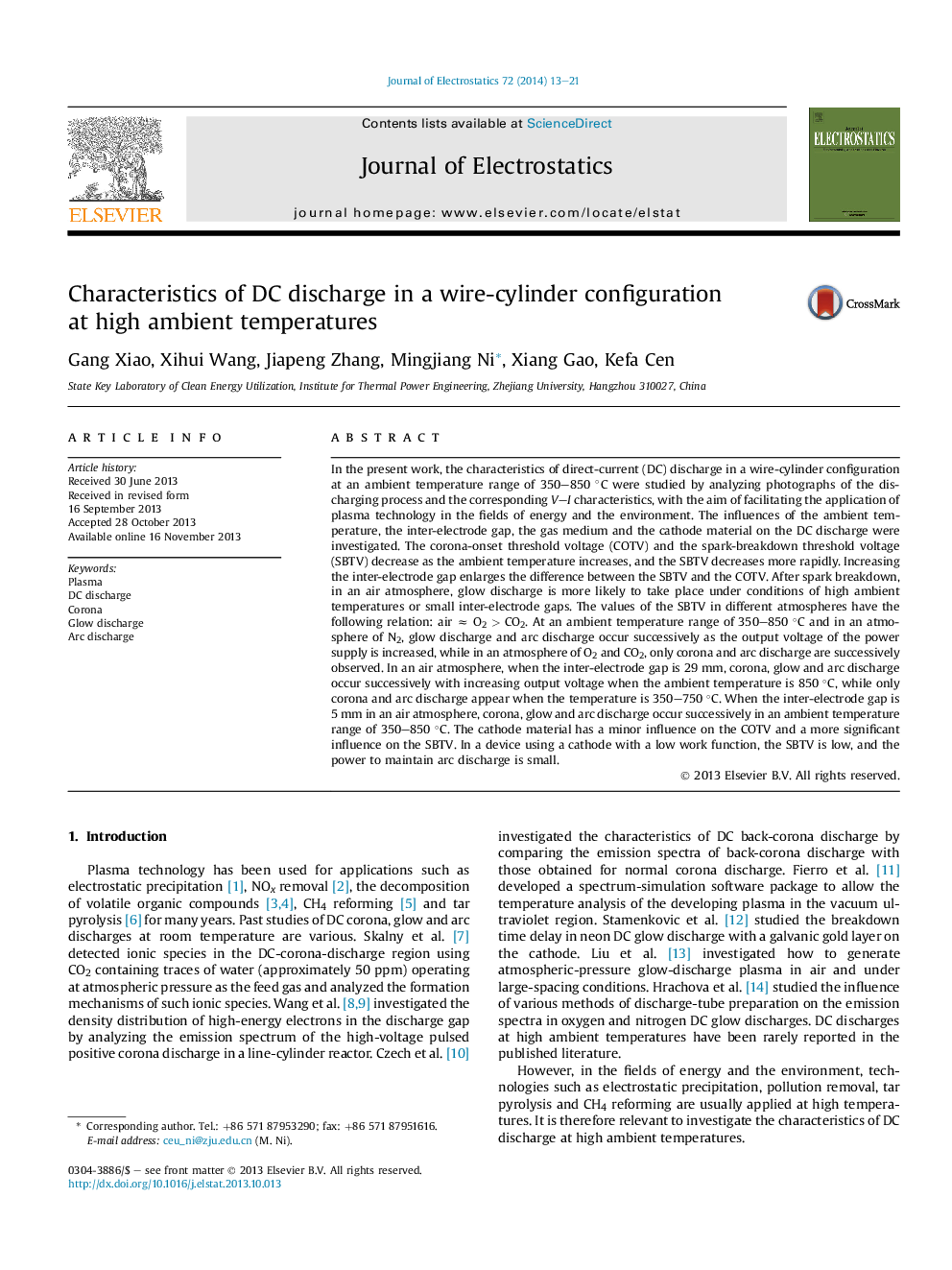| Article ID | Journal | Published Year | Pages | File Type |
|---|---|---|---|---|
| 725962 | Journal of Electrostatics | 2014 | 9 Pages |
•Glow discharges are likely to occur at small inter-electrode gaps.•Values of SBTV in different gases are as follows: air ≈ O2 > CO2.•A cathode of low work function provides a low SBTV.•Different types of DC discharge under various conditions are summarized.
In the present work, the characteristics of direct-current (DC) discharge in a wire-cylinder configuration at an ambient temperature range of 350–850 °C were studied by analyzing photographs of the discharging process and the corresponding V–I characteristics, with the aim of facilitating the application of plasma technology in the fields of energy and the environment. The influences of the ambient temperature, the inter-electrode gap, the gas medium and the cathode material on the DC discharge were investigated. The corona-onset threshold voltage (COTV) and the spark-breakdown threshold voltage (SBTV) decrease as the ambient temperature increases, and the SBTV decreases more rapidly. Increasing the inter-electrode gap enlarges the difference between the SBTV and the COTV. After spark breakdown, in an air atmosphere, glow discharge is more likely to take place under conditions of high ambient temperatures or small inter-electrode gaps. The values of the SBTV in different atmospheres have the following relation: air ≈ O2 > CO2. At an ambient temperature range of 350–850 °C and in an atmosphere of N2, glow discharge and arc discharge occur successively as the output voltage of the power supply is increased, while in an atmosphere of O2 and CO2, only corona and arc discharge are successively observed. In an air atmosphere, when the inter-electrode gap is 29 mm, corona, glow and arc discharge occur successively with increasing output voltage when the ambient temperature is 850 °C, while only corona and arc discharge appear when the temperature is 350–750 °C. When the inter-electrode gap is 5 mm in an air atmosphere, corona, glow and arc discharge occur successively in an ambient temperature range of 350–850 °C. The cathode material has a minor influence on the COTV and a more significant influence on the SBTV. In a device using a cathode with a low work function, the SBTV is low, and the power to maintain arc discharge is small.
Graphical abstractFigure optionsDownload full-size imageDownload as PowerPoint slide
